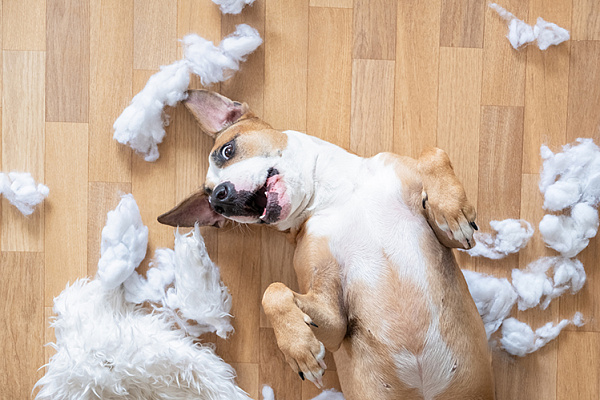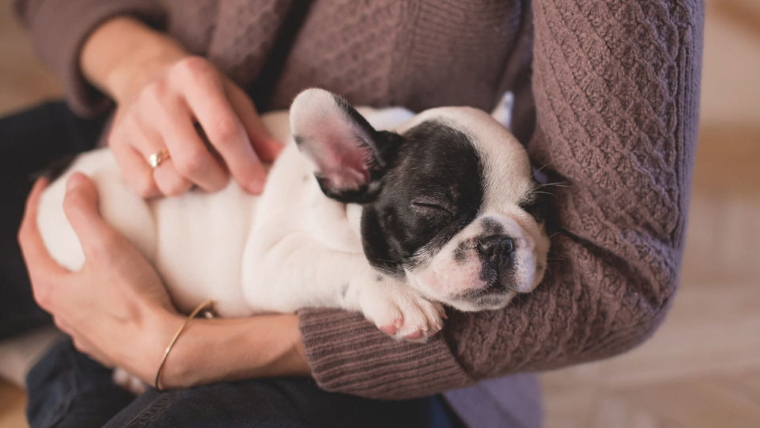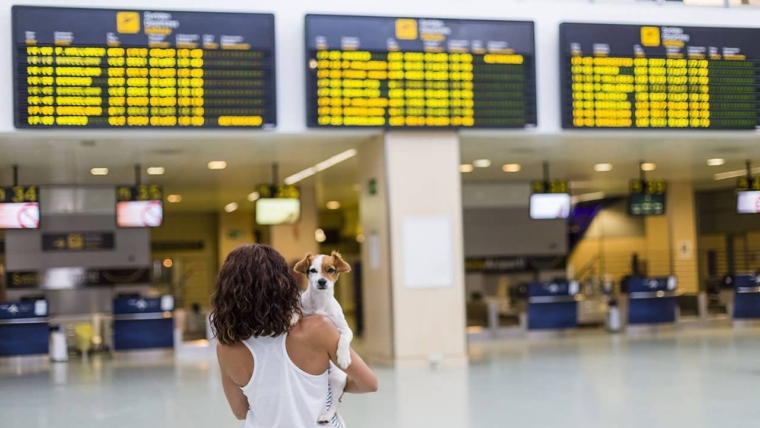
Fear of separation in dogs is more common than you might think. Dogs don’t like to be left alone because it’s not natural behavior for them. Through the domestication of dogs, we have genetically conditioned our four-legged friends to be social. This is the only way our dogs can ensure their survival. We provide them with food and water and meet their needs. Above all, we are their social partner.
However, this natural predisposition doesn’t mean that you can’t teach your dog to stay quietly alone. On the contrary! Once your dog has learned to enjoy the peace and quiet, the quiet and time at home, it will be more than okay for him to be alone for a few hours. Because let’s be honest: for small emergencies, weekly shopping or a visit to the hair salon, we just can’t do without it. Besides, going in with dogs is not allowed everywhere! And that’s when a solution for our beloved furry nose is needed. Through regular, step-by-step training, your dog will gain the experience that being alone does not have negative consequences. She will have the experience that you will always return to your dog, and thus she will learn to relax without you.
Preventing Separation Problems
Have you ever come home and found your apartment trashed? Most of us owners only then realize how serious the situation is. However, from the dog’s point of view, the suffering began much earlier. The good news is that you can find a solution for your human-dog team. Keep your dog safe, be there for your dog and treat him with understanding.
Why is a stable human-dog bond so important?
Having a strong bond with your dog is the basis for a calm and harmonious coexistence. But again, it is important that the bond between you and your dog is balanced. Because only a balanced bond provides guidance, provides support, and gives your dog a sense of security. One of the reasons your dog may be stressed by being alone is because the bond between you has become too strong and, therefore, unbalanced. Do you often call your dog your shadow affectionately? Does it follow you every time you move around the apartment? Then steps must be taken to loosen the bond. Talk to your trainer at the training school to find a solution with him.
Today we’d like to give you some tips on what you can do preventively so it doesn’t lead to separation anxiety, and how you can easily convey to your dog that he can be calm when he’s alone.
Preventive measures
Before you start training, you must answer the following question: Where should my dog stay while I am away? We owners often think that a dog would like to have the whole house or the whole apartment to himself. However, this can be stressful for your dog. It may well be that he can’t come to his senses because of the many stimuli. Therefore, we recommend that you choose a room in which your dog feels comfortable and safe.
In the room you choose, put a basket, blanket, or pillow for your dog that your dog already associates with a positive feeling that will serve as a safe haven.
Now that you’ve chosen a place, it makes sense to introduce a farewell ritual. Rituals are positive, habitual behaviors that make our dog’s daily life easier. These rules serve as a support for you and your dog. Your dog will feel good about himself because of the consistency of your actions, because he always knows what to expect.
Introducing the farewell ritual
We would like to give you an example of what a farewell ritual might look like:
Take your jacket and your house key. Your dog can really tell from the jacket whether he is allowed to go outside or whether he needs to stay inside. Now go to the kitchen and get a small treat for your dog that he can easily swallow.
Go with your dog to the room where she should stay while she is alone. They send her to her blanket or basket. Now you can say goodbye to your dog verbally and say, for example: “I’ll be back soon.” Then place the treat in your dog’s place, turn around without comment, walk to the door and close it behind you without looking at your dog. It is important that you do not look at your dog again. She may understand eye contact as an invitation to follow you.
With the right training, transition to a dog quietly left alone
Start training today to leave your dog alone for a few seconds. This creates a routine for your dog, and it will be perfectly normal for you to open the front door and walk out without your dog.
So practice at least ten times a day going out the door of the dwelling or into other rooms of your house. Close the door behind you, go out to the mailbox and return to your apartment. It is important that you no longer pay attention to your dog when you directly leave the house, and after you return, also ignore your dog first. This exercise will show your dog how pointless it is to open and close the door.
Repeated repetitions make this exercise boring for your dog after a few days. So you can slowly increase the time. At first you were only outside the door for two seconds, now it’s five seconds. Don’t go back into the apartment until your dog has calmed down. We recommend that you write down the time in a training diary. This way you’ll have better control and see your overall progress faster. Gradually increase the demands of the exercise. When your dog can lie quietly in the room for five seconds when you return from the mailbox, then extend the exercise time. Now leave the house for 20 seconds. When she is calm for 20 seconds by the time you return, increase that time to 40, 50 or 60 seconds. In small increments, increase the time intervals each day.
If two minutes are already successful today, start practicing for four or five minutes tomorrow. If you repeat this exercise daily, in a few weeks your dog will realize that he can safely be left alone. It is best to practice this exercise of staying alone after training with a load for your dog. This way he will have less energy and be calmer when doing the exercise.
Daily Exercise
The right workload for our dogs supports learning to be alone because the dog is content and relaxed. Find the right workload that suits your dog and his needs. So you can take your dog for a walk before training and then leave your apartment as an exercise. Vary the time intervals. Depending on how strenuous the exercise was for your dog, just leave your dog out for five minutes or leave him alone for ten minutes, depending on his level of training. Adapt the alone training to your dog’s daily exercise routine.
If you follow all of these tips, nothing will keep your dog from being quietly alone. We wish you and your dog a fun workout.


